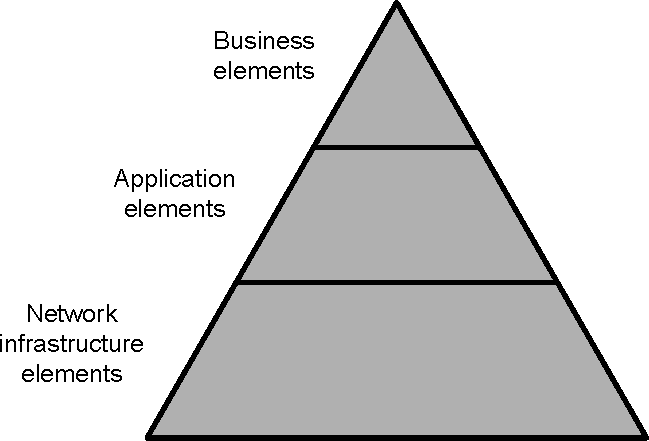Business enterprises, such as those operated by financial institutions, manufacturers, retailers, and network service providers, consist of the following broad categories of elements as shown in Business enterprise hierarchy of elements:
-
Network infrastructure elements
Devices (such as hosts, routers, and switches) and connections that make up a network.
-
Application elements
Software programs (such as accounting packages, order management programs, and inventory control packages) that are layered over and hosted by the network infrastructure elements.
-
Business elements
Business service offerings and business processes and the subscribers (such as service subscribers, customers, organizations, business units, lines of business, and departments) who use those service offerings and processes.
Figure 1. Business enterprise hierarchy of elements 
The degradation or failure of important network infrastructure elements can slow or stop vital applications and services, and dramatically reduce user productivity in needed business areas. For example, a host (an infrastructure element) that exhibits degraded performance will slow one or more applications that are running on it. The slow applications will, in turn, disrupt business services and processes on which subscribers depend.
VMware Smart Assurance Business Impact Manager (Business Impact Manager) calculates the impact of network infrastructure and application root-cause problem events on business elements, and creates business impact notifications. The business impact notifications enable business enterprises to immediately identify disruptions and failures, and to prioritize the resolution of the infrastructure and application problems in accordance with their business impact.